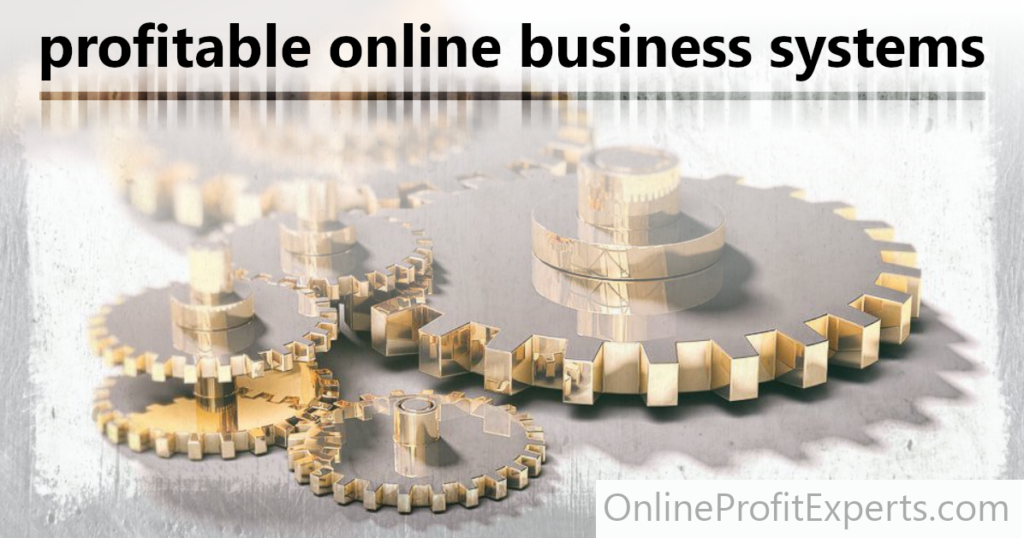
Here are seven different online business systems, with details and pros and cons for each.
(if you haven’t read the first part of this article on starting an online business, yet, click here to do so).
Affiliate marketing
Affiliate marketing is one of the most popular forms of internet business. Basically, you sell someone else’s product or service, and you get a commission. This has become even more popular since books like “The 4-Hour Workweek” illustrated how some people make great money from their affiliate business without putting much time into it (once it is set up).
It’s known as a type of “performance-based” marketing, because you get paid according to your performance, i.e. how many sales are made to people who clicked your affiliate link.
It’s low-risk and you can even start for free with a free website (such as one from WordPress.com or Blogger.com), or a free YouTube channel, but don’t let that make you think that only small profits are possible . . .

. . . a webinar JV broker I work with, recently announced that a brand new webinar he was brokering, had made sales of $997,000 in just the first seventy days. And that’s at 50% affiliate commission, so affiliates (which would mostly be owners of mailing-lists, for that niche) had made, between them, $498,500 in that same seventy days (although they would be paid up to 30 days later). And that’s commissions just from that one webinar, and many mailing-lists in this niche (which is online business) promote a different webinar each week to their subscribers. And that’s just ONE of the many webinars that just one broker handles simultaneously.
Sites which specialise in affiliate products, such as JVZoo or ClickBank make vast numbers of affiliate sales. On JVZoo you can check the approximate number of sales of any product, and the price and commission for each (as well as the EPC which is more important, see below), and see that a lot of money is being generated each month. And ClickBank say that they have made over $3 Billion in sales overall (and a typical commission would be 50%), so money is definitely being made in affiliate marketing!
Three types of affiliate content . . .
Here are three popular methods of creating content to generate affiliate commissions (whether articles, video or both), are:
- Reviews of products. Examples include a review of an internet business affiliate product, or a review of a product on Amazon.com (one of the most famous affiliate programs).
- Contextual content with affiliate links. You talk in depth about the problem the product will solve, or the desire it will fulfil, and then mention one or more relevant products near the end of the content (with your affiliate link, of course).
- Comparison. Here you compare two or more different products. This can produce better results than just talking about one product. For example, one marketer promoted a weight-loss product in a local newspaper and made some sales, then he tried comparing 3 different products, giving a recommendation of the one he preferred, and this resulted in more than twice the income from the same ad spend.
One important factor to understand when trying to make affiliate commissions, is that you are not trying to SELL, that’s the job of the sales-page (or sales-video, webinar etc.) which visitors get to when they click your affiliate link. What you need to do is to generate interest and curiosity so the visitor wants to know more and will click your affiliate link. So it usually works better to be honest and helpful, rather than trying to over-hype or “hard sell”.
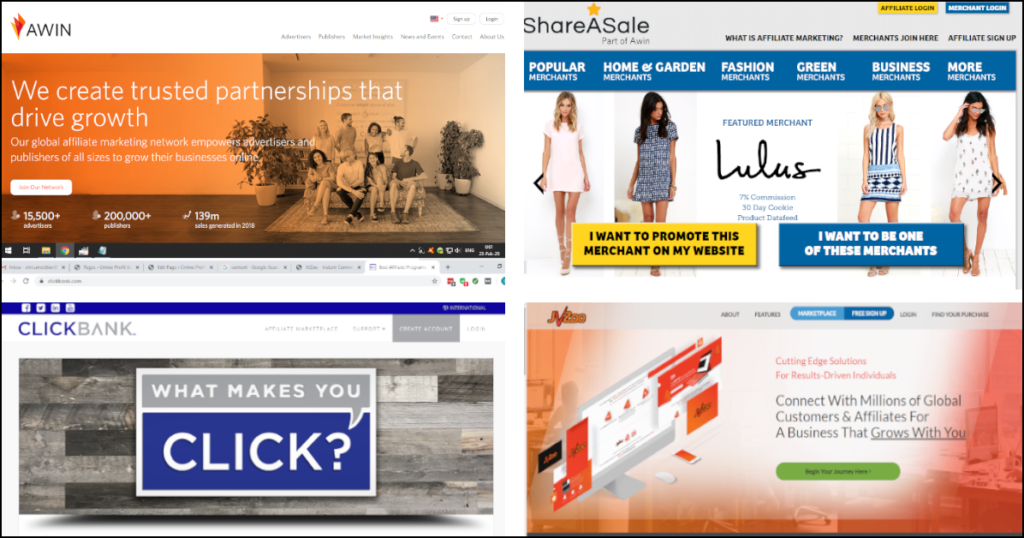
Other well-known affiliate networks, in addition to JVZoo and ClickBank, include CJ (formerly Commission Junction), shareasale and AWIN (Affiliate Window).

Common mistakes . . .
Two of the most common mistakes with affiliate marketing are:
- assuming that the biggest payout is “best”. In reality, the bigger the payout, the more time or money required per test. Newbies might pick a product with a $10k payout, then say “it’s not working” when they’ve put up some content and waited for a few months. Even if they were doing everything right, with relatively small amounts of traffic it might take several years before they would actually know if what they are doing is working or not. And for paid traffic or paid leads, the “rule of thumb” is that you need to spend 3 times the payout per test . . . I’ve seen someone who bought and sold businesses (getting at least $10k per sale), buy $50 of leads and say “this is not working”, which is just ignorance of the business model.
- focusing on payout and commission percentage instead of actual performance. It’s easy for newbies to assume that a 50% commission on an internet business product is “better” than a 6% commission on an Amazon product at the same price-point, but, if you think through the whole system, you might see that a sales-page for an internet business product might convert at 2%, compared to some Amazon pages which convert at 70%. So understand that it’s overall results (the return on your investment of time or money) which matter. Some systems, such as JVZoo, list the EPC (earnings per click) for each product, which is a much more useful statistic than the commission percentage or payout (think about it!).
One of the best ways to improve your results with affiliate business is to build a mailing-list. You offer something valuable for free to anyone who subscribes, then you regularly post great information to your list, sometimes posting affiliate links. Your subscribers get to know, like and trust you, which makes them much more likely to buy from you, and, of course, you can sell different things to them over time, and make commissions over and over, long-term.
Variations on affiliate marketing include CPA (Cost Per Action), where you get paid when someone takes an action such as entering their email, or entering their ZIP code, rather than for sales. CPA networks include MaxBounty and PeerFly.
Make sure you understand and comply with the legal requirements, both the general laws and the affiliate requirements of specific merchants. For example: if your content has affiliate links, you are required to include an FTC declaration on your website, making it clear that you might earn commissions from links clicked. And for Amazon affiliates, you are not allowed to quote, generalise or summarise anything said by a buyer, or buyer ratings or prices (unless you use the Amazon API).
Pros and Cons of affiliate marketing:
Pros:
- Start for free (or cheaply with your own website)
- relatively quick and easy to set up and test
- it’s usually easy to track precise numbers at each stage in your funnel, so you know what’s working and what needs improving
- you don’t need to worry about product creation, customer support, delivery etc.
- flexibility – can be done in your spare time, or while you travel
- residual income (you make money while you sleep)
Cons:
- It usually takes time to produce income
- You have no control over pricing or commissions
- there is a lot of competition
- there is a vast choice of things to sell, which can be overwhelming and confusing
Agency
Creating an agency for online services can be a great way to make big money relatively quickly IF you can sell effectively.
Examples of online services an agency can provide include:
- FaceBook Ads management
- Google Ads management
- email marketing
- reputation management
- SEO
- web-design
- content creation
- social media management
But there is one service that is easier to market than any of those . . . which is the most direct way of giving a business what nearly all businesses need more of, and that is customers/clients. This service is called lead-generation, and it means finding people who might be interested in what the business provides (those would be called prospects) and getting them to actively express an interest in that business (which makes them leads).
While it is possible to outsource various parts of the agency business system, including generating leads, closing the leads for your own business so they become your customers, and providing the services, it usually works best if you start by doing most of those parts yourself, so you understand exactly how everything works.
On the other hand, an agency is fundamentally a team, compared to a freelancer (see below) who is an individual.
Here are some pros and cons of starting an agency business:
Pros
- Can generate big money relatively quickly
- some parts of the system can be outsourced
- you’ll have the support of a team around you.
Cons
- Unless getting clients is done effectively, no money is made
- you generally have to be available during business hours to talk to clients
- it is likely to be competitive
- usually requires some expert skills and proven results before starting
- you need to lead and manage your team effectively
- can be extremely hard work, especially when getting established
Blogging/vlogging/podcasting

These can be a great business if you are passionate and/or knowledgeable about a specific niche or area, and can make big money (although usually it takes time to build up the business). Startup costs can be low (such as having your own website) or zero (such as starting a YouTube Channel).
While most niches can be monetised in some way, such as with affiliate products (anything from Amazon, or online courses etc.) or sponsorship, it’s a good idea to check income producing options before you start, just to make sure. You might be surprised at some of the niches which can produce a decent income, such as the guy who made over a million dollars from a website on bass fishing! Basically, you need to be focusing on an area where people are passionate and spend money on an ongoing basis.
Another option for making an income from your content is making some of it for paying members only. Or consider leveraging your expert status to get coaching or speaking engagements.
Or use one of the simplest options to profit from your content . . . AdSense, which puts Google ads in or around your content, automatically placing relevant ads for the subject of your content.
Or use one of the affiliate programs which pays you for sales of posters, so you can put relevant posters in or around your content. A tip for doing that effectively is to use emotionally evocative descriptions, eg. instead of “wolf poster” write “the alert, powerful and intelligent wolf, master of its environment, superbly adapted to life in its endless frozen wilderness”.

If you love talking about your passion or area of expertise, this could be a great business for you, because it involves doing something you love to do anyway.
The technical things like creating a website or podcast, are relatively easy these days, or can cheaply and easily be outsourced if you need to, so you can focus on creating a stream of great content.
Then it’s just a matter of finding effective ways to monetise your content, such as with affiliate programs (see the “affiliate marketing” section, above) or finding sponsors once you have a decent following . . . for example, some companies will sponsor Instagram micro-influencers even with relatively small followings (5k+ as long as engagement is good and there is a strong focus).
Before you start, you need to define your focus . . . too wide will tend to be more diffuse and have less impact, and too narrow will not have enough of an audience. Some basic key-word research will give you an idea of your audience size (see the SEO section for details).
You also need to consider the potential restrictions if you use a platform you don’t own . . . for example, at the time of writing, YouTube has suddenly made it very much more difficult to make any money from any video there relating to children. And some years ago, Amazon suddenly prohibited quoting, generalising or summarising anything a buyer has said, ruining many online business empires over-night.
Building a mailing-list can, as in most types of businesses, multiply your results, because you can have ongoing contact with subscribers over a long period, and they get to know, like and trust you.
Here are the pros and cons of blogging/vlogging/podcasting
Pros
- Relatively easy, and cheap or free to start
- you spend time doing something you love doing anyway
- flexibility
Cons
- Likely to take a lot of time and consistent effort before the income can replace your job
- often competitive
- you are likely to need to learn about SEO and/or social-media marketing etc. to build your following
- it can be challenging to handle reputation attacks
eCommerce
This means “the activity of electronically buying or selling of products”, so, basically setting up your own online store/shop to sell physical products.
So you need to create your online store, find suitable products to sell, add them to your store, and get potential customers to your store.
Well-known eCommerce Platforms include:
- BigCommerce
- Shopify
- 3dcart
- WooCommerce
- Volusion
- Prestashop
- Weebly
- Squarespace
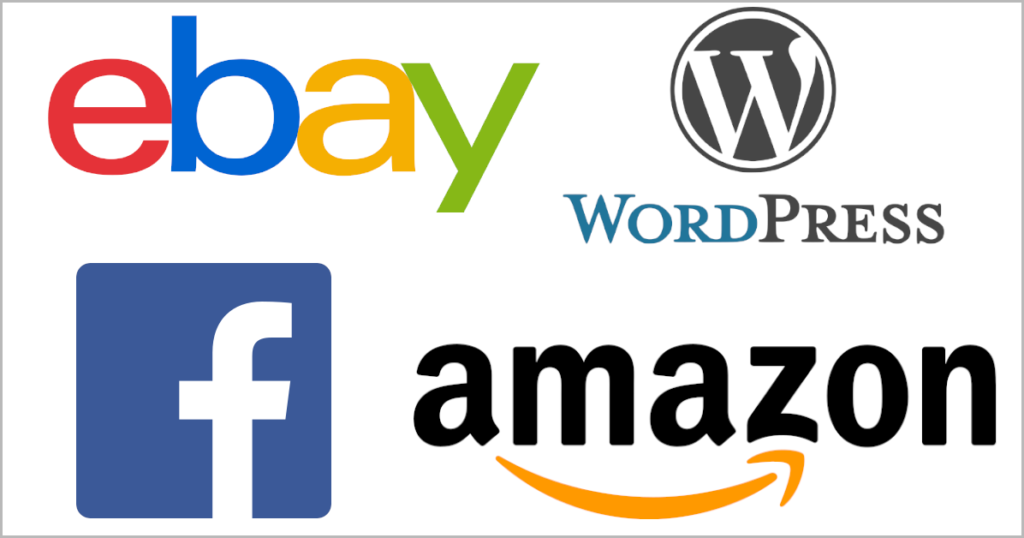
Some of those are free additions to a WordPress website, some are paid options, and you can also sell on Amazon, Ebay, FaceBook etc.
When choosing a platform, make sure it makes it clear that the checkout process is secure . . . if your store doesn’t convince shoppers that the check-out process is secure, they could get reluctant to buy anything.
The three main ways of sourcing products for your store are creating them yourself, working with a manufacturer or wholesaler, or dropshipping (where the vendor ships direct to the customer).
For dropshipping, consider the pros and cons of finding a relatively local dropshipper (which are more challenging to find but should ship efficiently) vs using AliExpress.com (which is low-cost but takes a long time to ship, which can frustrate customers).
If you use AliExpress, one option is to offer some products as “free plus shipping and handling”, and set the shipping and handling at $5+ which more than covers the cost of the shipped product and profit for you.
Pros
- Relatively easy and can be cheap to set up (depending on platform)
- quick and easy to scale up and down or test different products and offers
- since you get each buyers email address anyway, you have a ready-made mailing-list
Cons
- relevant taxation and laws can be complex
- competitive
- can include ongoing expenses for the selling platform (even before you sell anything)
Freelancing
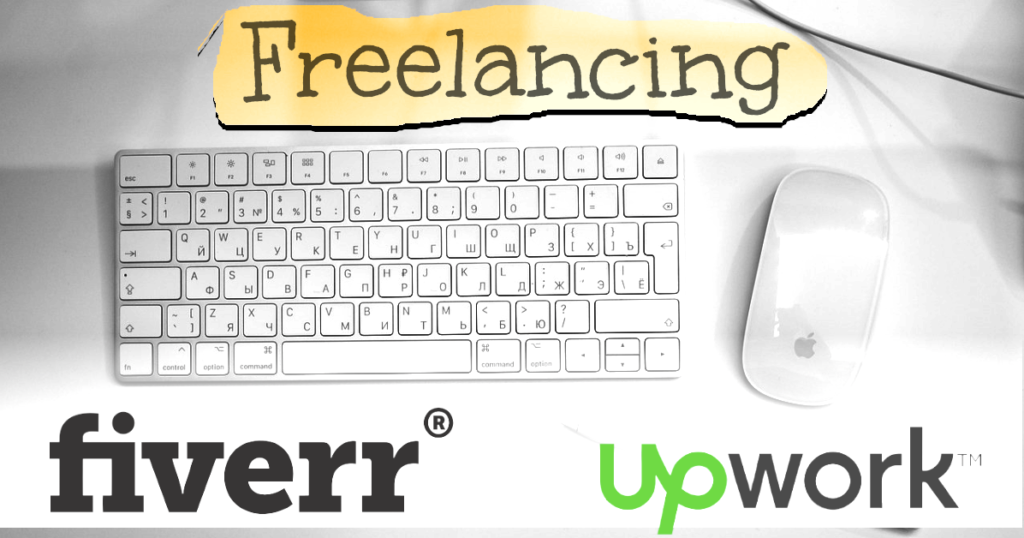
While this is often more of a job (something which requires your own time for money to be made) than a business (something which can be fully outsourced or sold), with the addition of arbitrage principles (which means buying something then selling it at a higher price) it can become a real business, which can then be up-scaled much more easily.
On the other hand, it is usually best to start by doing things yourself, and only later outsource some or all of the work, although some people do have success outsourcing the work from the beginning (provided they understand the area well enough to communicate clearly with clients).
While there are plenty of other options, the two best-known outsource websites are Fiverr and UpWork. It is also possible to find clients directly, such as by promoting your services on relevant FaceBook Groups.
Fiverr started with things someone was willing to do for $5, but has now expanded to include prices up to $995 (to go higher than that, just require the purchase of multiple Gigs), and can easily include multiple levels of service, plus additions (like faster turnaround) for an extra fee.
UpWork is aimed more towards bigger jobs, but can still be good for small low-cost projects.
The most common mistakes when starting freelancing are to charge the same as others do, initially, and to just create Gigs and wait for clients to find you.
Initially, you should charge less than others, until you build up your reputation. And it’s much more effective to actively seek clients, as well as creating standard Gigs.
On Fiverr, you can continually scan the “Wanted” section and reply rapidly to anyone wanting something you can do, with a custom Gig using their exact wording. That way you can start getting some good feedback, which will make it easier to get more work. Or even better, for some jobs you can actually do the job first, and show it to the client in a way that they can’t use it until they pay you (for example, with graphics, add “demo” over the image so it can’t be used yet).
Use a similar active strategy for UpWork (where you can scan jobs posted and place your bid on those you could do) or other platforms.
Plus, you should find ways to promote your services on social-media, such as relevant FaceBook groups etc.
Here are some pros and cons of freelancing
Pros
- free and relatively quick to start
- can build up to a significant income, especially with arbitrage
Cons
- competitive . . . you are competing with people in 3rd world countries, where 20 cents an hour can be a good wage for some workers.
- you need good skills to compete effectively
Information products
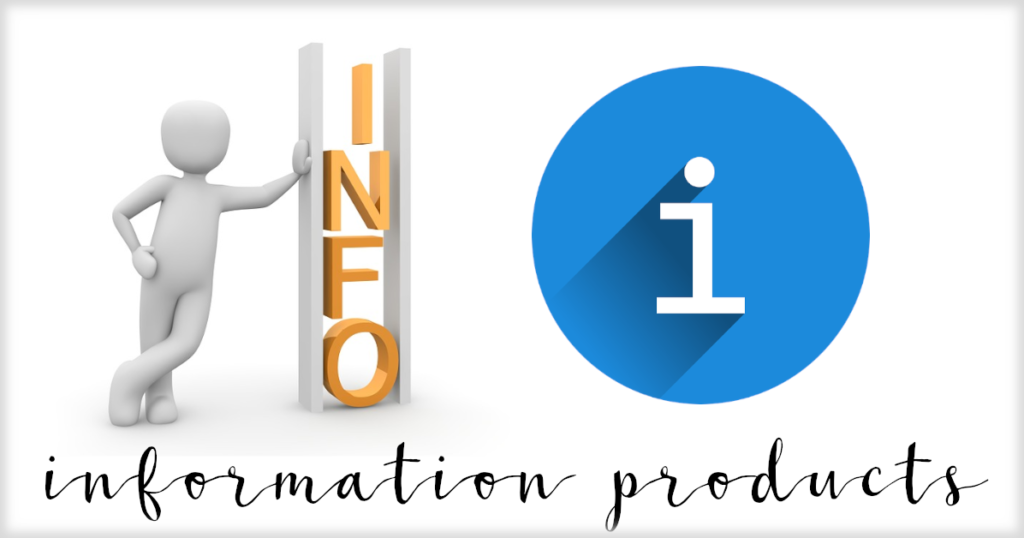
Online courses are hugely popular right now with $30 billion a year being spent already, and growing rapidly . . . e-learning sales are estimated to reach $325 billion by 2025.
And the number of e-books sold in the US is growing steadily with over 266 million units sold in 2017, and still growing from there.
One of major points in selling information products is perceived value and different formats. For example, a high-quality ebook might sell for up to $67, but the exact same information might be able to be made into an online course with video modules, sold by webinar for $2,000, and might actually be much easier to sell via webinar (if everything is done very well).
A brand-new course recently made $995,000 in sales in a mere seventy days, selling by webinar, and there are plenty of people making more than a million a year from selling courses this way. But to do this, the course needs to be very high quality, with unique information and genuine proof of success, and every part of the process needs to be done very well.
On a smaller scale, the same ebook might also be sold as a printed book, or as a PDF on CD, each at a different price and through different channels, and, if everything is done well, can make many sales.
As with business in general, it is good to start with a big problem or burning desire, and then provide a way of delivering what is wanted, rather than create some content and then try to find a way to persuade people to buy it. This makes marketing easier, which is the main challenge with information-products . . . creating them is easy, selling them is what you need to focus on.
Places to sell information include Amazon (an ebook can easily be converted into a Kindle book, and sold there), JVZoo, ClickBank, and online course platforms like Udemy or Teachable.
It can also work well to give away free information (as a way of building a mailing-list) with some way of monetising the resulting list, such as affiliate product reviews or comparisons, other ebooks you create, courses etc.
Great ways to create information products include interviewing one or more experts, and re-writing existing information in your own words. And for some people, speaking and then transcribing the result can be a much quicker way to generate content than typing.
Here are pros and cons of selling information products:
Pros
- often free and relatively quick to start
- can build up to a significant income, especially if you build a mailing-list, and/or sell high quality courses via webinar
Cons
- competitive (unless you do it very well)
- to sell well on some platforms you need to write effective sales-copy (although on others you don’t)

Click here for the last section of this article, with more essential details on starting your online business effectively . . .
- combining different business types
- back end and customer/client chain
- where to find the best information
- lean startup for internet business
- creating your business website
- SEO
- list-building
- up-scale carefully
- paid traffic advantages
- and more.
